Storing your lawn tractor for winter
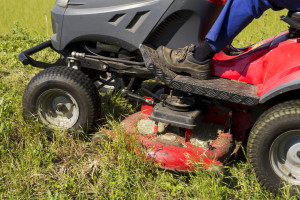

After you cut the lawn for the final time for the season, it's time to prepare your lawn tractor for its winter hibernation. Taking the right steps to store your tractor in the fall saves you time and trouble when it's time to crank up the riding mower in the spring.
These general guidelines help you prolong the life of your tractor and prepare it for smooth operation when you pull it out next season.
What you need
Engine tune-up kit
Lubricants such as multi-purpose grease and mower deck spray
Replacement belts and cutting blades, if needed
Cleaning brushes, scraper, soapy water and rags
Wash under the deck
Cleaning the mower deck now prevents rust from creeping in during the off-season.
If your lawn tractor’s deck doesn't have a deck washout port, park the tractor near a faucet and stop the engine. Use a hose with a spray attachment to clean under the deck.
If your mower deck has a washout port, follow these steps to clean the underside of the deck.
1. Park the lawn tractor in a clear and level area of lawn, near an outside water faucet with the deck's discharge chute pointed away from people, pets, the house and parked vehicles Set the parking brake and stop the engine.
2. Remove the bagger chute or mulch cover so water and debris can fly out the discharge chute during cleaning.
3. Connect a water hose from the faucet to the washout port on your mower deck and turn on the water.
4. Start the engine and move the throttle to the fastest setting. Engage the cutting blades. Leave the blades running for several minutes to thoroughly clean under the deck.
5. Shut off the cutting blades and stop the engine.
6. Turn off the water and disconnect the water hose from the washout port.
7. Start the tractor and move it to a dry area on concrete or asphalt. Engage the cutting blades for several minutes to help dry the underside of the deck
Prepare the deck for storage
For the next phase of cleaning, park the tractor near its storage area and let the engine to cool.
Many owners' manuals recommend that you remove the mower deck and store it disconnected from the tractor for the winter. Refer to your owner's manual for specific instructions on how to store your deck. Here are common steps to take when getting the mower deck ready for storage.
Disconnect the deck fasteners and pull the mower deck from under the tractor.
Thoroughly clean the underside of the deck. Scrape off any remaining grass clipping or debris and wipe the underside of the deck with rags. Replace any damaged or dull mower blades now so you get a clean cut when you use the mower in the spring.
To help prevent grass from sticking to the underside of the deck, spray the underside with a coat of Mo-Deck spray.
Remove the mandrel pulley covers and clean grass and debris off the mandrel pulleys. If you see grease fittings on each of the mandrel pulley housings, add grease to fill each mandrel using a grease gun. Stop filling when you encounter the resistance—that means the mandrels are full. Wipe off residual grease after filling each mandrel. Examine the deck belt and replace it if necessary.
Wash the top of the mower deck and the mandrel pulley covers with a rag dipped in soapy water. Wipe the deck with a clean rag soaked in clear water and let it dry.
Touch up any nicks or scratches on the deck by lightly sanding the area and applying touch-up paint.
Reinstall the mandrel pulley covers after the deck dries completely.
Your mower deck is now ready for storage. Move it to your storage area if you're keeping it detached from the tractor.
Prepare the engine
Prepping the engine now saves time next spring when the grass takes off.
Fuel and oil. You have two options for preventing gummy deposits from forming in the carburetor and fuel system over the winter:
Run the engine until it burns all the gasoline in the tank and fuel system. The engine dies when the fuel runs completely dry.
Add fuel stabilizer and run the engine for 10 minutes so the fuel with stabilizer enters the carburetor. Change the engine oil so the lawn tractor has fresh oil when you start the it in spring.
Lube the pistons and change the plugs. Remove the spark plugs) and pour one ounce of oil into each spark plug hole. Distribute the oil through the cylinder by turning on the engine for 5 seconds. The oil coats the piston and cylinder to prevent corrosion during storage.
Gap and install new spark plugs.
Replace or clean the filters. If your tractor engine has a fuel filter, follow the directions in your owner's manual to replace it. Remember to clamp the fuel lines to prevent gas from spilling if you didn't run the engine dry of fuel earlier.
Remove the air filter cover and carefully pull off the pre-filter and paper air filter. Wipe the air filter base with a damp cloth, taking care to prevent dirt from entering the carburetor intake port on the air filter base.
Replace the pre-filter if you find holes or damage. If the pre-filter is in good shape, wash the pre-filter in soapy water and then rinse it with plain water. Pat the pre-filter dry with paper towels.
Tap the paper air filter on the ground to remove dust and dirt. Replace the paper air filter if it's too dirty to clean or damaged. Reinstall the air filter and pre-filter on the engine.
Clean the battery
Disconnect the black battery cable and then the red one. Pull the battery out of the tractor and wipe it with a clean wet rag. Dry the battery thoroughly.
Clean deposits off both battery terminals and both battery cable ends by brushing them with a wire brush until the metal turns bright. Coat the battery terminals with grease or petroleum jelly to prevent corrosion during storage.
Place the battery back in the tractor but don't reconnect the battery cables. Connecting the battery during storage causes corrosion and battery power leakage. Position the battery cables so they don't contact the battery terminals.
If you have a battery charger, fully charge the battery now. Even after following these steps, the battery may still require charging in the spring before you start the tractor the first time.
Prepare the tractor
Blow grass clippings and debris off the tractor body using a leaf blower or a compressed air hose. Wipe the body with a damp cloth. Repair scratches and nicks by sanding them lightly with fine grit sandpaper then apply a coat of touch up paint.
Clean debris from under the tractor, especially the steering plate below the brake pedal. Debris often collects on top of the steering plate and can restrict brake pedal movement.
Check the ground drive belt and replace it now if it's worn or damaged. Your owner's manual shows how to route the ground belt over the pulleys and through the belt keepers.
Now is a good time to check the air pressure in the tires and fill them with air if needed. Replace any damaged or tread-bare tires.
Store the tractor
Push the tractor to your storage area, preferably a dry spot indoors. Don't store it indoors with gasoline in the tank if gas fumes may reach an open flame or spark.
If you store the tractor and mower deck outside, move the mower deck under the tractor and cover them with a protective lawn tractor cover that doesn't retain moisture. Don't use a plastic cover because it doesn't breath, allowing moisture to condense on tractor surfaces, which causes rust.
It might seem like putting away your lawn tractor is a lot of work, but you’ll be glad you did it in the spring, when yard care goes from 0 to 60 overnight. If this to-do list is just too much, you can put off changing the oil and replacing the spark plugs until spring—but that will cut into the time you have for picking out impatiens at the garden center.
Most common symptoms to help you fix your riding mowers & tractors
Choose a symptom to see related riding mower and lawn tractor repairs.
Main causes: faulty battery, bad alternator…
Main causes: damaged cutting blade, worn deck pulley, damaged mandrel pulley, loose fasteners on mower deck components…
Main causes: damaged tie rods, bent or worn wheel spindle, worn front axle, damaged sector gear assembly…
Main causes: worn or broken blade belt, broken belt idler pulley, blade clutch cable failure, bad PTO switch, damaged ma…
Main causes: punctured tire or inner tube, leaky valve stem, damaged wheel rim…
Main causes: engine overfilled with oil, leaky head gasket or sump gasket, damaged carburetor seals, cracked fuel pump, …
Main causes: clogged carburetor, damaged flywheel key, dirty spark plug, stale fuel, improper valve lash, engine needs a…
Main causes: shift lever needs adjustment, neutral control needs adjustment…
Main causes: worn or broken ground drive belt, bad seat switch, transaxle freewheel control engaged, transaxle failure, …
Most common repair guides to help fix your riding mowers & tractors
These step-by-step repair guides will help you safely fix what’s broken on your riding mower or lawn tractor.
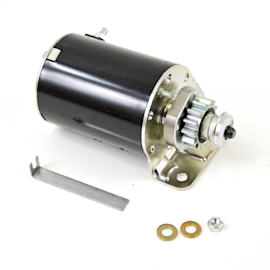
How to replace the starter motor on a riding lawn mower
If you hear the solenoid click but don’t hear the starter motor spin when you turn the key, follow these steps to replac…
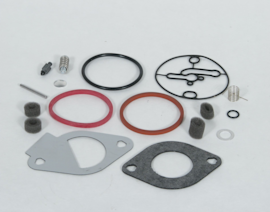
How to rebuild a riding lawn mower carburetor
Get your sputtering carburetor running smoothly in 60 minutes.…
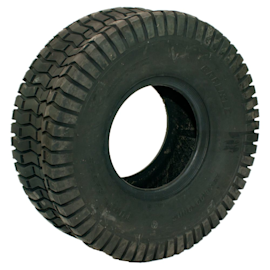
How to replace a riding lawn mower rear tire
Your mower can’t run on a damaged rear tire. Here’s how to install a new one.…
Effective articles & videos to help repair your riding mowers & tractors
Use the advice and tips in these articles and videos to get the most out of your riding mower or lawn tractor.

Learn about all the convenient features on our Sears PartsDirect website that make your parts purchases easier.…

Get answers to frequently asked questions about Sears and Sears PartsDirect.…
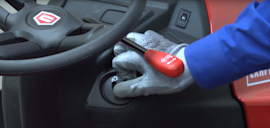
Check the starter solenoid, starter motor, wiring, battery and engine.…